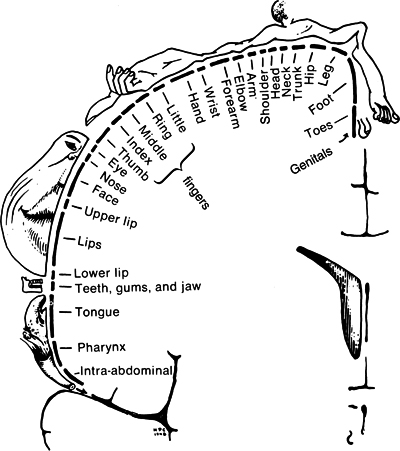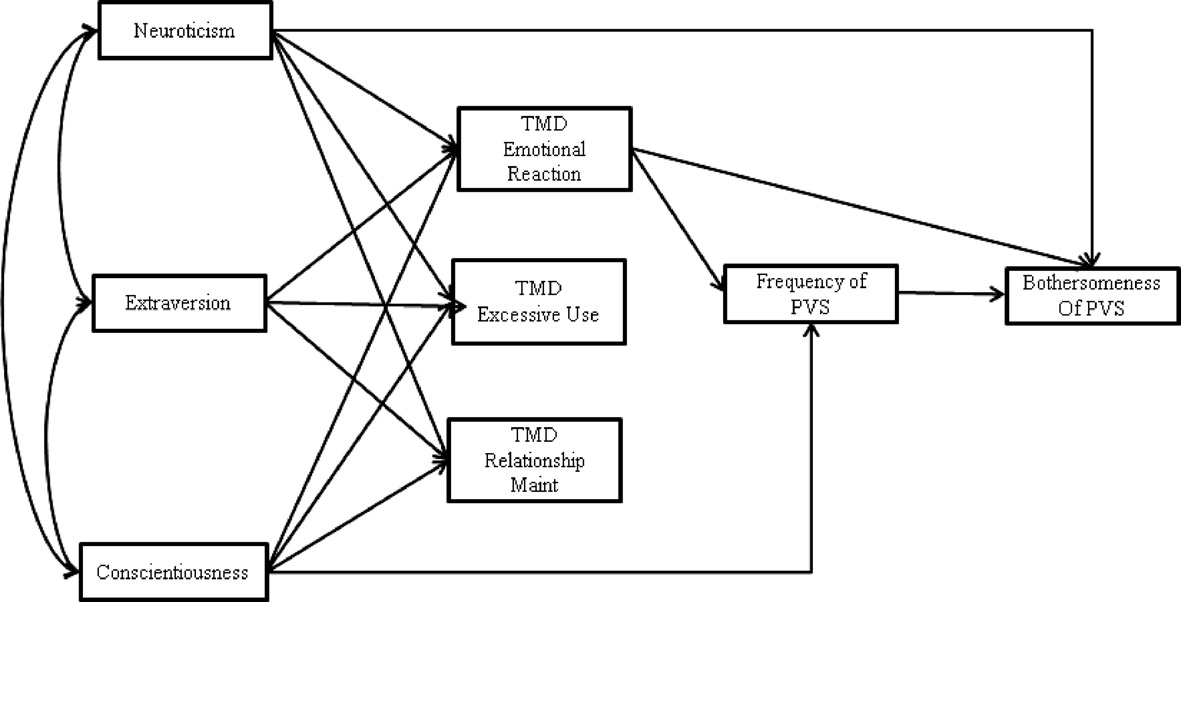Banishing Phantoms from the Skin: ‘Vibranxiety’ and the Pathologization of Interfacing
David Parisi / College of Charleston

“Have you ever felt your pocket vibrating, but when you grabbed your phone there was neither a call nor any activity that would have made it shake? This is known as phantom vibration syndrome and it is real.”
-Larry Rosen, iDisorder: Understanding Our Obsession with Technology and Overcoming Its Hold on Us2
Capitalizing on the persistent contact between mobile communication devices and the bodies of their operators, designers have long employed vibrational cues, sent to via the skin, as a means of alerting their users to incoming messages. Opening up this communicative channel3 entails cultivating a new receptivity to strategically-generated vibrations, as users learn to attend to a very specific type of interruption in the tactile field. Control over the skinspace is ceded, however intermittently and sporadically, to the device. The brain, in its neuroplastic capacity, begins to treat the vibration-enabled mobile device like an extension of the body; as neuropsychologist William Bar explains: “cell phones enter the neuromatrix of the body—they become appendages.”4 While the connection between device and brain gradually solidifies, it remains necessarily unstable, prone to erroneous judgments and misperceptions. Over the past decade, with the increased proliferation of vibration-enabled mobile communication devices, these misperceptions have grown more common, and the phrase Phantom Vibration Syndrome5 has gradually emerged as a sort of ad-hoc term for designating this fugitive sensation.

In this post, I argue that the popular and scientific press adoption of the term encourages users to view phantom vibrations as dangerous and threatening byproducts of interfacing with mobile communication technologies. By borrowing Phantom Limb Syndrome from the phraseology of clinical psychology, the phantom vibrations cell phone users routinely experience acquire a pathologized connotation.
But if we understand PVS as a maladjustment to changing conditions of attentiveness, in continuity with prior dis-orderings of perception, the interface becomes a site of negotiation, where new, normative conditions of sensory attentiveness collide with users’ necessarily unstable and imperfect psychophysical experiences. The pathologization narrative transforms the subject’s occasional inability to accurately perceive vibrational signals into a condition that ought to be rehabilitated, an indicator of a potentially troubled relationship to mobile communication technologies.
According to the scant psychological studies of phantom vibrations, the sensation is widespread among users of mobile communication technologies; a 2012 study of college undergraduates, cited widely in the popular technology press, found that 89% of the 290 student sample experienced phantom vibrations.6 The same study differentiates between two types of phantom sensations. The first occurs when the brain improperly or inaccurately interprets a tactile sensation not caused by the vibrating phone (the feeling of clothing rubbing against the skin, the tactile cacophony of an incoming subway train, or the deep, rumbling bass at a concert). Through a gradual process of sensory conditioning, mobile phone users affix a specific meaning to specific vibration patterns at specific spots on the body. Vibrations therefore become not merely accidental byproducts of the tactile field’s encounter with its environment, but rather “alerts of social communication” attached to their user’s constantly-shifting emotional matrix. In this first type, the term “phantom vibration,” as the study’s lead author Michelle Drouin points out, is a bit of unintentional misdirection; the user experiences a tactile sensation, but fails to correctly perceive its source. By contrast, the second type of phantom vibration involves feeling a vibrating sensation absent any physical trigger, what might more accurately be described as a “tactile hallucination” akin to the Phantom Limb Syndrome that PVS derives its name from.7 Here, the brain conjures sensation where there is none, duping the user into anxiously checking the device’s status. As a sort of tactile wish-image, a host of hopes and fears are projected onto the mentally-generated vibration; the hallucinated sensation can signify either the desire for constant and persistent social contact, or dread and anxiety in anticipation of an incoming message. Phantom vibrations are linked, in this research, to a range of attitudes—neuroticism, extraversion, and conscientiousness—as well as another pathologized relationship to mobile communications known as “Text Message Dependency” (TMD).

For all the smoke here, there appears to be little fire. The findings in both Drouin’s study and the 2010 study by Rothberg et al. imply “that phantom vibrations are neither physically nor psychically bothersome to those who experience them.”8 Drouin speculates that the individuals do not view the imagined sensations as bothersome precisely because they do not interpret them as pathological: “it is likely that individuals consider these phantom vibrations a normal part of the human-mobile phone interactive experience.” (1495; emphasis added) The discursive framing of the sensation, from this perspective, contributes to the way that users read, interpret, and relate to their own perceptual experiences.
Popular press accounts of PVS, however, are sensationalizing the skin’s phantoms. A 2011 article in Fast Company asked readers if they had “fallen victim” to Phantom Vibration Syndrome. Reaching for the phone in the absence of its vibration indicates that one is a slave of both “biology” and “our modern-day dependence on gadgets.” PVS is “more than just a pulsing sensation in the pocket,” and should instead be understood as a indicator that readers “are no longer fully present in the real world.” PVS here indexes a crisis of divided attention that needs to be actively managed and corrected. Similarly, in Rosen’s iDisorder, the experience of phantom vibration suggests a potentially troublesome relationship with mobile communication technology, part of an autodiagnostic checklist designed to help users determine the healthfulness of their relationship to mobile communication technologies.

Both examples consciously refer to phantom vibrations using the medicalized acronym PVS. The narrative framing of PVS as a pathological byproduct of increased technological permeation urges mobile device users to view these perceptual curiosities as sensations that need to be managed and avoided. Vibranxiety, a less formal but often-used synonym for PVS, suggests that those experiencing phantom sensations are doing so because they are in a technologically-induced heightened state of excitement. Vibranxiety, from this perspective, serves as a synecdoche for the general condition of pathological overconnectedness— an inability to control the intrusions mobile communication technologies make upon the psychic and physical lives of their users.
The strategy of making this previously-neglected communicative modality serve a role in information processing brings a new vulnerability to the sense of touch. With the tactile channel open and on alert—receptive, anxious, and constantly scanning its domain for a signal—it now must be cared for, managed, and maintained in new ways. The mobile communication device presents its user with a new space where perception may become increasingly unstable, where perceptual processes may begin to initiate themselves even absent the device’s presence. Normative therapeutic narratives in the popular press ask mobile phone users to reframe and reinterpret tactile phantoms, to treat them as sensations that must be banished in the service of maintaining a healthy relationship both to mobile devices and to the social relationships the devices provide access to. As Jonathan Crary explains in Suspensions of Perception,9 changing communication technologies are accompanied by recalibrations in the proper parameters of perceptual attentiveness:
“For every mutation in the construction of attentiveness there are parallel shifts in the shape of inattention, distraction, and states of ‘absentmindedness.’ New thresholds continually emerge at which an institutionally competent attentiveness veers into something vagrant, unfocused, something folded back against itself.”
Though it’s safe to conclude that fears about PVS are overblown, I want to suggest that the recent interest in the phenomena calls attention to the way tactile sensations register the shifting landscape of media communication technologies. This psychophysical relationship to the vibrating device must be actively navigated, a process where users learn to properly distinguish between a ‘real’ alert and an imagined or misperceived one. Phantom vibrations are sensations that ought to be avoided: healthy users cultivate a refined and perfected ability to sense informatic vibrations, accurately distinguishing tactile signal from tactile noise, while refusing to indulge the subconscious temptation to hallucinate touches where there are none.

Image Credits:
1. Human Phantom Vibration Syndrome
2. The Sensory Homunculus
3. Drouin: The psychological process of phantom vibrations
4. Rosen, iDisorder
5. Most Interesting Man
- Christopher Baker, HPVS (Human Phantom Vibration Syndrome) http://christopherbaker.net/projects/hpvs/ [↩]
- Rosen, Larry. iDisorder: Understanding Our Obsession with Technology and Overcoming Its Hold on Us (New York: Palgrave, 2012). [↩]
- Psychology researchers in the mid-twentieth century began a wave of research aimed at exploiting and refining touch’s communicative capacity. For one overview of this work, see Carl Sherrick, “The Art of Tactile Communication,” American Psychologist (1975): 353-360. [↩]
- William Barr, quoted in Carla Williams “‘Phantom’ Cell Phone Sensations: Mind Over Matter.” [↩]
- To add another layer of apparent scientificity to the condition, PVS is often referred to as Human Phantom Vibration Syndrome. [↩]
- Drouin, Michelle et al. “Phantom vibration among undergraduates: Prevalence and associated psychological characteristics.” Computers in Human Behavior 28 (2012): 1490-1496. [↩]
- Oliver Sacks accords special attention both to tactile hallucinations generally and to Phantom Limb Syndrome specifically in his recent book Hallucinations. Part of the incongruence between PLS and PVS concerns the often traumatic nature of the former and the mainly innocuous character of the latter. [↩]
- Only 2% of respondents in both studies reported finding the sensations “very bothersome,” while the bulk of the respondents (over 90%) found phantom vibrations either not bothersome at all or only a little bothersome. [↩]
- Crary, Jonathan. Suspensions of Perception: Attention, Spectacle, and Modern Culture (Cambridge: MIT Press, 1999). [↩]
interesting article. I can’t remember where I read it, but some evil genius coined the double entendre FauxCellArm to describe the phenomena you address. Also, have you considered how McLuhan’s idea of “autoamputation” might apply? I think surely it does.
This article is very interesting to me for a couple of reasons. I’ve actually spent a lot of time thinking about how these devices will one day connect with our brains but because we engineered them that way. After reading this, it is cool to see how our brains are already connecting to these devices (in a somewhat insignificant way) without us really knowing it. I definitely have experienced this “syndrome” from time to time and always thought I might be alone.
I do not think PVS, being a by product of over using your mobile communication devices, is in anyway bad for our brain signals. When I was a lot younger I remember my door bell was always being rung by mailmen and neighbors. Also, the sound of my garage door being opened indicating my mom or dad was home. Over time I would imagine hearing these things sometimes. Run to the door and no ones there; check the garage no one is home. This was an interesting read.
Hi Mike,
“FauxCellArm” wins on clever points!
Thanks for your comments, and for suggesting McLuhan’s concept of autoamputation. Autoamputation seems to suggest an automatic psyhcophysiological response of psychic numbing or disengagement. PVS, however, results from an abundance of sensation, rather than its absence. The strategies for managing PVS involve different types of numbing– disabling vibrate mode, not carrying the device in contact with the skin, ect– but this involves a literal amputation of the newly-added appendage, or at least an active shutting down of its capacity to generate tactile cues, instead of an automatic nervous response.
McLuhan is a tricky read on this subject, IMO, as he seems to grant too much explanatory power to biological narratives of environmental adaptation– it’s often difficult to tell where he departs from that framework and where he embraces it.